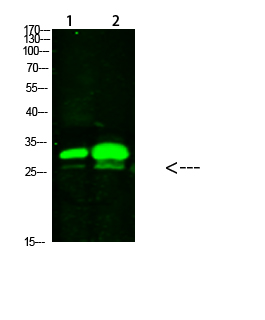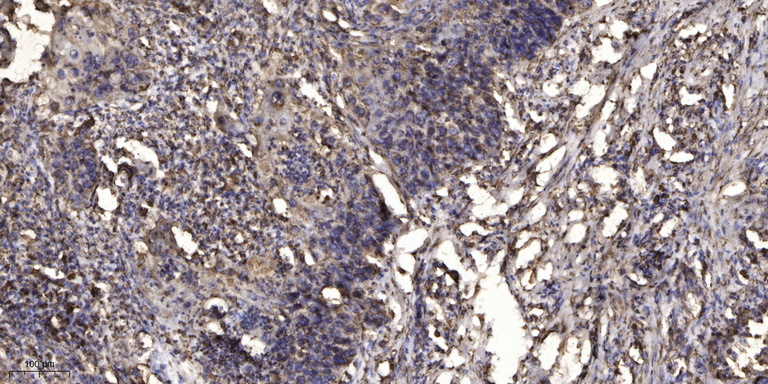KCTD7 Polyclonal Antibody
- Catalog No.:YT6069
- Applications:WB;ELISA;IHC
- Reactivity:Human;Mouse;Rat
- Target:
- KCTD7
- Gene Name:
- KCTD7
- Protein Name:
- KCTD7
- Human Gene Id:
- 154881
- Human Swiss Prot No:
- Q96MP8
- Mouse Gene Id:
- 212919
- Mouse Swiss Prot No:
- Q8BJK1
- Immunogen:
- Synthesized peptide derived from human KCTD7. at AA range: 181-230
- Specificity:
- This antibody detects endogenous levels of KCTD7
- Formulation:
- Liquid in PBS containing 50% glycerol, 0.5% BSA and 0.02% sodium azide.
- Source:
- Polyclonal, Rabbit,IgG
- Dilution:
- WB 1:500-2000;IHC 1:50-300; ELISA 2000-20000
- Purification:
- The antibody was affinity-purified from rabbit antiserum by affinity-chromatography using epitope-specific immunogen.
- Concentration:
- 1 mg/ml
- Storage Stability:
- -15°C to -25°C/1 year(Do not lower than -25°C)
- Other Name:
- BTB/POZ domain-containing protein KCTD7
- Observed Band(KD):
- 33kD
- Background:
- This gene encodes a member of the potassium channel tetramerization domain-containing protein family. Family members are identified on a structural basis and contain an amino-terminal domain similar to the T1 domain present in the voltage-gated potassium channel. Mutations in this gene have been associated with progressive myoclonic epilepsy-3. Alternative splicing results in multiple transcript variants.[provided by RefSeq, Jan 2011],
- Function:
- disease:Defects in KCTD7 are the cause of progressive myoclonic epilepsy type 3 (EPM3) [MIM:611726]. EPM3 is an autosomal recessive, severe, progressive myoclonic epilepsy with early-onset. Multifocal myoclonic seizures begin between 16 and 24 months of age after normal initial development. Neurodegeneration and regression occur with seizure onset. Other features include mental retardation, dysarthria, truncal ataxia, and loss of fine finger movements. EEG shows slow dysrhythmia, multifocal and occasionally generalized epileptiform discharges.,similarity:Contains 1 BTB (POZ) domain.,
- Subcellular Location:
- Cell membrane. Cytoplasm, cytosol.
- Expression:
- Brain,
- June 19-2018
- WESTERN IMMUNOBLOTTING PROTOCOL
- June 19-2018
- IMMUNOHISTOCHEMISTRY-PARAFFIN PROTOCOL
- June 19-2018
- IMMUNOFLUORESCENCE PROTOCOL
- September 08-2020
- FLOW-CYTOMEYRT-PROTOCOL
- May 20-2022
- Cell-Based ELISA│解您多样本WB检测之困扰
- July 13-2018
- CELL-BASED-ELISA-PROTOCOL-FOR-ACETYL-PROTEIN
- July 13-2018
- CELL-BASED-ELISA-PROTOCOL-FOR-PHOSPHO-PROTEIN
- July 13-2018
- Antibody-FAQs
- Products Images

- Western Blot analysis of 1,mouse-brain 2,mouse-spleen cells using primary antibody diluted at 1:1000(4°C overnight). Secondary antibody:Goat Anti-rabbit IgG IRDye 800( diluted at 1:5000, 25°C, 1 hour)

- Immunohistochemical analysis of paraffin-embedded human Squamous cell carcinoma of lung. 1, Antibody was diluted at 1:200(4° overnight). 2, Tris-EDTA,pH9.0 was used for antigen retrieval. 3,Secondary antibody was diluted at 1:200(room temperature, 45min).



